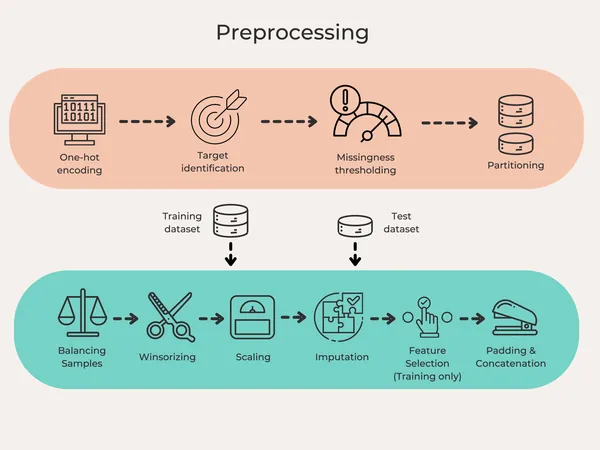
Revolutionary AI Toolkit Set to Transform Disease Prediction Before Symptoms Appear!
2025-05-02
Author: John Tan
Unlocking the Future of Preventive Health Care
In a groundbreaking development, researchers at the University of Utah’s Department of Psychiatry and the Huntsman Mental Health Institute have unveiled RiskPath, an innovative open-source AI toolkit designed to foresee the onset of chronic diseases long before they manifest symptoms. This pioneering technology promises to reshape how we approach preventive health care.
Understanding Explainable AI (XAI)
RiskPath employs explainable artificial intelligence (XAI), enabling complex algorithmic decisions to be communicated clearly to humans. This crucial feature allows healthcare providers to grasp how predictions are made, fostering trust in the system.
A New Era in Disease Prediction Accuracy
Unlike current systems that only pinpoint at-risk patients with 50% to 75% accuracy, RiskPath boasts an impressive prediction confidence of 85% to 99%. By delving into years of health data, this toolkit identifies individuals at risk of various conditions before they exhibit telltale signs.
Targeting Chronic Illnesses: A Game Changer
With chronic diseases responsible for over 90% of healthcare costs and mortality, the stakes are high. Dr. Nina de Lacy, MBA, MD, leading the charge on this research, highlights the potential for tailored interventions. "By pinpointing high-risk individuals early on, we can shift the focus from treating diseases after they occur to proactive prevention. This approach could redefine health care as we know it!"
Key Advantages of RiskPath
The team rigorously validated RiskPath across three extensive patient cohorts, successfully predicting eight prevalent conditions including depression, anxiety, ADHD, hypertension, and metabolic syndrome. Here’s what sets it apart:
1. Deeper Insight into Disease Dynamics
RiskPath reveals how risk factors evolve, allowing for identification of crucial intervention periods. For instance, it was discovered that screen time and executive function play increasingly pivotal roles in the development of ADHD as children transition to adolescence.
2. Simplified Risk Assessment
Despite its ability to analyze hundreds of health variables, RiskPath indicates that most conditions can be predicted effectively using just 10 key factors, streamlining integration into clinical environments.
3. Intuitive Risk Visualization
The system features user-friendly visualizations that pinpoint which life stages contribute most significantly to disease risk, aiding researchers and clinicians in strategizing optimal intervention timing.
Future Prospects: Integrating RiskPath into Clinical Practice
The research team is eager to explore how RiskPath can be incorporated into clinical decision support systems and preventive care protocols. Plans are underway to extend its capabilities to encompass more diseases and diverse populations.
With the potential to revolutionize preventive health strategies, RiskPath stands at the forefront of technology that not only anticipates health issues but also empowers individuals and healthcare providers in the battle against chronic diseases.


 Brasil (PT)
Brasil (PT)
 Canada (EN)
Canada (EN)
 Chile (ES)
Chile (ES)
 Česko (CS)
Česko (CS)
 대한민국 (KO)
대한민국 (KO)
 España (ES)
España (ES)
 France (FR)
France (FR)
 Hong Kong (EN)
Hong Kong (EN)
 Italia (IT)
Italia (IT)
 日本 (JA)
日本 (JA)
 Magyarország (HU)
Magyarország (HU)
 Norge (NO)
Norge (NO)
 Polska (PL)
Polska (PL)
 Schweiz (DE)
Schweiz (DE)
 Singapore (EN)
Singapore (EN)
 Sverige (SV)
Sverige (SV)
 Suomi (FI)
Suomi (FI)
 Türkiye (TR)
Türkiye (TR)
 الإمارات العربية المتحدة (AR)
الإمارات العربية المتحدة (AR)